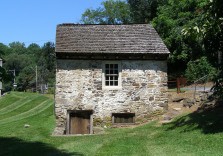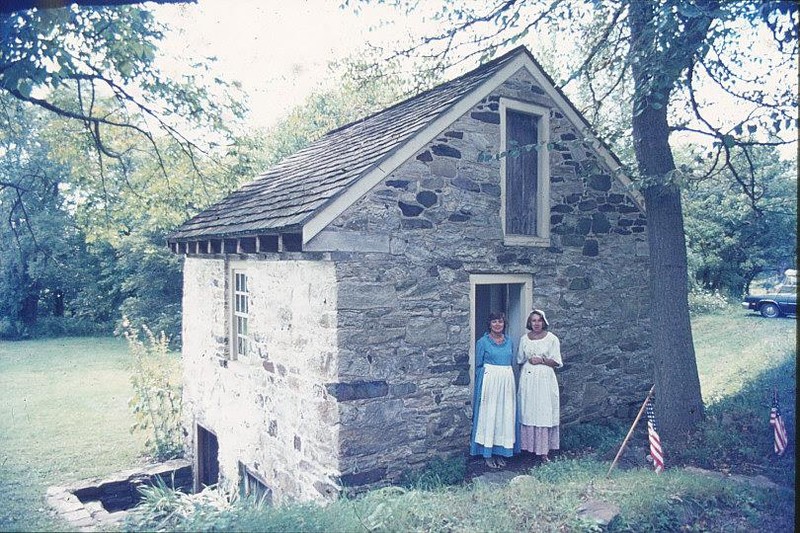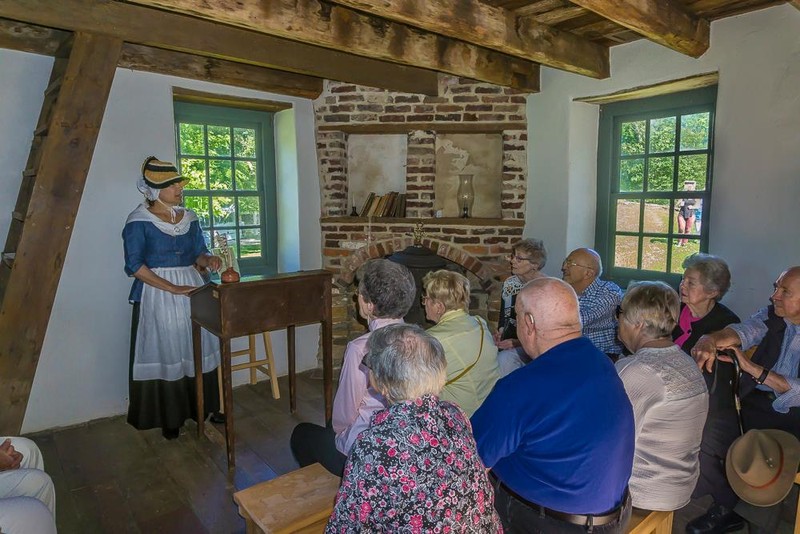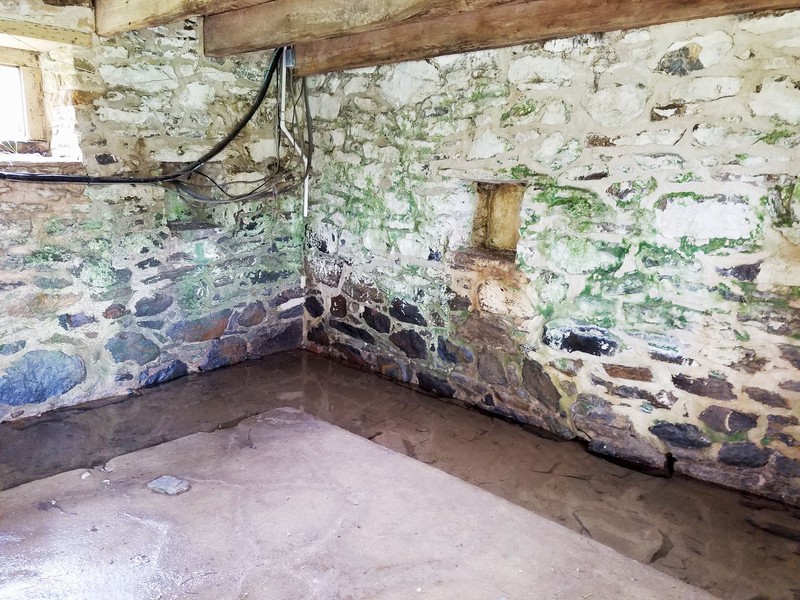Springhouse
Introduction
Text-to-speech Audio
Images
The south exterior of the springhouse

The Spring house before the visitors center was built.

The second floor of the springhouse. Eventually served as a schoolhouse in the 1800s, witch is what we interpret it as today

The first floor of the springhouse with the spring still flowing through it

Backstory and Context
Text-to-speech Audio
Francis Chadsey emigrated from England in 1685 and married his second wife, Grace Stanfield, in 1695. They had six children. He purchased a 500 acre tract in Birmingham Township in 1696 from Daniel Smith, an original purchaser of Wm. Penn. Daniel Smith died intestate and due to legal problems Chadsey did not take possession of the tract until 1702. He died in 1713, having built a corn mill on the Brandywine, the dam and mill race of which are still visible. He was a member of the assembly of lower counties, elected in 1707 and in 1705 was appointed by the court to lay out the roads from the forks of the Brandywine to Naaman’s Creek Mill. His inventory indicates he was a man of means who lived in comparative comfort. His eldest son, John, inherited the entire plantation and half the corn mill when he became of age. John Chads became of age in 1717 and soon after constructed the springhouse as his new home.
Of the four facades of the springhouse only the east and north have remained unchanged since their construction some 250 years ago. The western facade was severely altered when the window was closed in sometime in the 19th century and there are signs of several patching jobs done in this area at different times in the springhouse’s history. It is difficult to draw any conclusions about the south wall because coats of whitewashing hide its secrets. We do know that a shed was built to cover the entrance to the spring room. The chimney in the northwest corner is a reconstruction. The cedar shingle roof is likewise a reconstruction, but it is supported by the original roof rafters.
Interior
In the spring room, the spring is still active, flowing out of the base of the east wall and exiting at the southwest corner. Niches are located in the north and east walls. Also of note here is the corbelled masonry support for the first floor fireplace.
The most noteworthy feature of the first floor room is the fireplace, with its distinctive recessed double cupboards. This fireplace has the same sort of paneled chimney breast as the fireplace in the mansion house, although the woodworking for this fireplace is probably simpler.
As is evidenced from the photograph on exhibit, considerable work has been done on the interior of this room. The window to the left of the fireplace was rebuilt when evidence of its earlier existence was discovered from clearly delineated cracks in the stone work. The door was rebuilt. The walls were replastered. A small section of the original plasterwork may be seen on the north wall. The ladder to the attic (or loft - for sleeping) has been reconstructed in the proper location. The rafters supporting the loft floor are original, wit the exception of the one on the east side of the ladder (just on the right as climbing the ladder.) The poplar floor of the loft has replaced the badly deteriorated original. The first floor flooring and the beams (visible in the spring room) are replacements.
